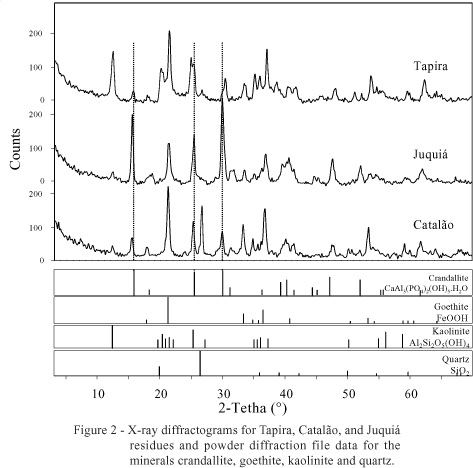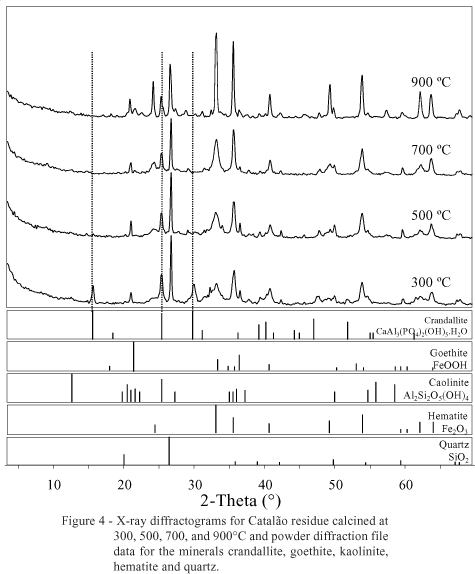Optimization in the use of phosphate rocks is important and the residues of fertilizer production in the form of crandallite may be suitable for agronomic use after calcination. With the objective of evaluating the effect of thermal treatment of the aluminous phosphates of the crandallite group as related to solubility, crystalline structure and morphology, samples from the mine residues of three Brazilian phosphate deposits (Tapira-MG, Catalão-GO, and Juquiá-SP) were collected, air-dried, and screened to 100 mesh. Sub samples were thermally treated at 300, 500, 700, and 900°C for 2 hours. Treated and untreated materials were analyzed by X-ray diffraction, scanning electronic microscopy, energy dispersive X-ray spectrometry, and for the total and soluble P contents. The treatment of samples: (i) raised P solubility in neutral ammonium citrate solution, (ii) caused the disorganization of the crystalline structure of crandallite at 500°C and above, and (iii) altered their morphology (cracking and rounding). The increase in P solubility of samples after calcination indicates that the agronomic utilization of these marginal P sources may be of interest since plant growth may be favored due to higher P availability. New studies to evaluate these materials in order to determine their agronomic effectiveness must be carried out to establish adequate conditions that favor their use by plants.
calcination; phosphate fertilizer; phosphate impurities







